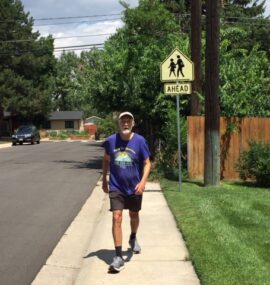Kidney function declines, sometimes rapidly, in older people
Physical activity can slow the decline
Chronic kidney disease rarely makes newspaper headlines, but it’s a rapidly growing health condition in older adults. If kidney disease itself isn’t bad enough, it increases risk of cardiovascular disease and premature death. Might healthy lifestyle choices, such as Keep Moving, reduce the risk of rapid chronic kidney decline? A team of investigators used data from 4,011 participants in the Cardiovascular Health Study to find out. Kidney function was measured as change in estimated glomerular filtration rate (eGFR, more filtration is better), while physical activity was evaluated at baseline from self-reports.
Over a median follow-up of seven years, the rate of rapid kidney decline diminished as the physical activity score increased in a step-wise manner. After adjusting for confounding factors, such as age, sex, and education level, participants in the two highest physical activity categories had a significant 28 percent lower risk of developing rapid kidney decline compared to participants in the two lowest categories. Greater exercise intensity predicted even lower risk of rapid kidney decline. Thus, older adults who engage in regular physical activity may reduce their risk of rapid kidney decline and other ills.
Would the level of physical activity predict incident chronic kidney disease (CKD) in an Asian population? Researchers in Taiwan investigated the longitudinal association between self-reported habitual physical activity and measures of kidney function in 199,421 adults aged 20 years or older. Over a median follow-of four years, all participants underwent at least two medical examinations to determine habitual physical activity and yearly change in estimated glomerular filtration rate (eGFR).
The average yearly decrease in eGFR in participants with baseline very low, low, moderate, and high physical activity was 0.46, 0.36, 0.30, and 0.27 mL/min/1.73 m2, respectively. Relative to participants with very low physical activity, the coefficients of yearly eGFR change were -43.93, 35.20, and 53.56 µL/min/1.73 m2, respectively, for the participants with low, moderate, and high-physical activity after controlling for a wide range of covariates. Relative to participants with very low physical activity, those who had low, moderate, and high habitual physical activity had 7, 6, and 9 percent lower risks of developing chronic kidney disease, respectively, after controlling for covariates. A higher level of habitual physical activity predicted a smaller decrease in kidney function and a lower risk of developing chronic kidney disease.
Longitudinal studies show that increased physical activity predicts slower kidney function decline in older adults. Researchers used data from 1,199 sedentary patients (average age 79 years) in the Lifestyle Interventions and Independence for Elders Study to determine if patients assigned to a physical activity and exercise group showed better kidney function than patients in health education group after two years. Participants in the physical activity and exercise group attended sessions twice weekly at their field center. These participants also conducted home-based strength, flexibility, and balance activities three to four times weekly for a target total time of 50 minutes. The health education participants attended 26 weekly, one-hour workshops then six monthly workshops. Kidney function was evaluated as the estimated glomerular filtration rate (eGFR).
After two years, the physical activity group showed statistically and clinically significant slower decline in kidney function and 20 percent lower risk of rapid decline compared to the health education group. This positive result occurred despite most participants in both groups achieving low levels of physical activity. Furthermore, kidney function declined more slowly with each incremental increase in physical activity. Even modest increases in physical activity produced meaningfully slower decline in kidney function. This study provides yet another reason for older people to increase their levels of physical activity, for example by walking more. Even if more physical activity didn’t help your kidneys, it would likely boost your health and well-being in other ways, such as having more energy and a better cardiovascular system.








